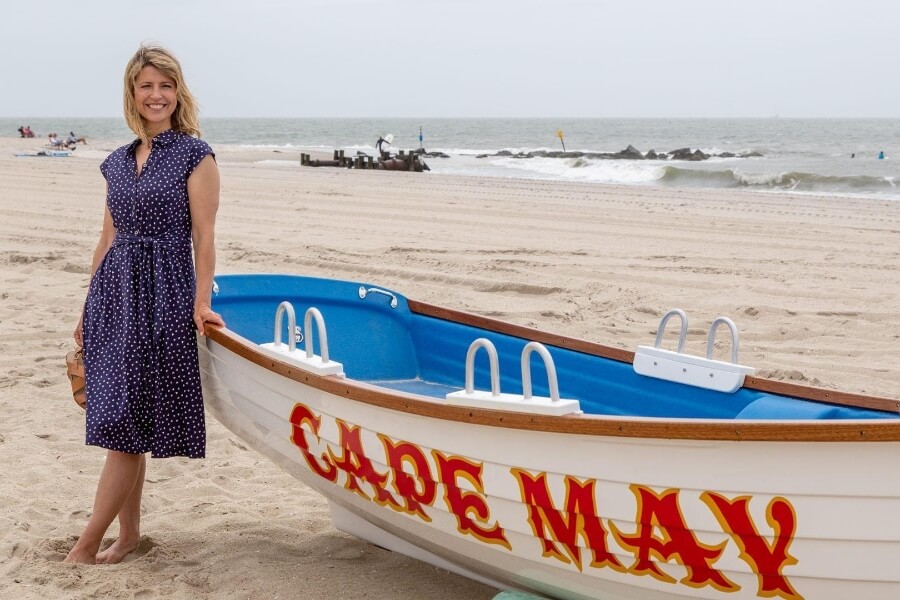A few years ago, a writer friend repeated a confession made by her agent, “I couldn’t sell a novel about a woman over fifty if it came with a blow job.” Very unscientific proof that it’s not your imagination that until very recently there’s been a dearth of fiction featuring strong female characters in midlife—the preferred euphemism for “older.” Like the token female in male-dominated professions, publishing seems to permit one Olive Kitteridge (2009) per decade, then it’s back to churning out books about comely young heroines yearning for true love, a baby, meaningful work, or framing their husbands for murder.
Two new books showcasing—it must be said—privileged midlife womanhood have come down the pike, each with very different takes about what it means to a woman in the peak of her health, wealth, and wisdom, old enough to have dispensed with Hallmark happily ever afters, women in full.
Fearless and Funny
 We first met Kate Reddy, heroine of Allison Pearson’s raucous new novel, How Hard Can It Be? 16 years ago. In I Don’t Know How She Does It (2002), Kate was a new mom with a high-powered job in finance and two young kids who was trying, daily, to crush it both at work and at home. The central working-mom dilemma provided the foundation of the narrative. Kate felt as if she was failing at mothering by tending to her work or failing at work by … the end of this sentence should rightly read “tending to her children,” but the kids were all right. What Kate failed at, in high comedic fashion, was the ability to keep up with the impossible cultural expectations of that generation of proto-helicopter moms. She missed soccer practices. She failed to provide homemade baked goods at the cavalcade of school events that always seem to demand artisanal snacks. Pearson is a cheerful, blistering satirist in the British mode, and her comedy flows easily from the ludicrous premise.
We first met Kate Reddy, heroine of Allison Pearson’s raucous new novel, How Hard Can It Be? 16 years ago. In I Don’t Know How She Does It (2002), Kate was a new mom with a high-powered job in finance and two young kids who was trying, daily, to crush it both at work and at home. The central working-mom dilemma provided the foundation of the narrative. Kate felt as if she was failing at mothering by tending to her work or failing at work by … the end of this sentence should rightly read “tending to her children,” but the kids were all right. What Kate failed at, in high comedic fashion, was the ability to keep up with the impossible cultural expectations of that generation of proto-helicopter moms. She missed soccer practices. She failed to provide homemade baked goods at the cavalcade of school events that always seem to demand artisanal snacks. Pearson is a cheerful, blistering satirist in the British mode, and her comedy flows easily from the ludicrous premise.
Strong female characters in literature don’t, as a rule, struggle with real-world bodily changes, but Kate does.
It was all good, culturally sanctioned fun. But in Pearson’s new novel Kate is now approaching her 50th birthday. Her adorable needy toddlers have turned into monstrous needy teenagers, and her husband has quit his good job to follow his passion and become a therapist (he also is an avid cyclist and watcher of every morsel that goes his mouth). At age 49 1/2, smack in the middle of perimenopause, she finds herself having, and wanting, to go back to work. In Kate’s field, 50 seems to be the age at which a woman is deemed unhireable, and so she decides to pretend she is 42. Hilarity ensues, including a truly daring extended set piece about being in the middle of an important meeting when her unruly perimenopausal period shows up and she’s forced to make due with large orchid leaf.
Strong female characters in literature don’t, as a rule, struggle with real-world bodily changes. The challenges of menopause are as invisible as the women who endure them. But Kate does, and Pearson is fearless.
Read More: Soul Searching? Let the New Book Circlework Be Your Guide
A Quiet Revolution

Willa’s story begins in 1967, with an extended close-up on the marriage of Willa’s parents. Her father is an amiable nice guy, while her mother is theatrical, prone to anger and storming out of the house in a snit. The parents’ marriage is not unfamiliar: the woman is a force to be reckoned with, the man is decent and dull. When the novel jumps ahead 10 years, Willa is a junior in college. It’s 1977, and, given that I’m nearly the same age as Willa, I fully expected her to have undergone the transformation that most of us experienced during those pot-smoking, concert-going, backpacking-through-Europe years. But Willa seems to have stepped in the wayback machine.
She travels home in a wool suit to visit her parents and introduce them to her new boyfriend, relieved he’s with her because “she wouldn’t have known what to do with the metal detector or how to check her luggage.” Coming of age in the late 1970s was cataclysmic, but Willa is a woman who never blasted “I Am Woman” on the car radio, or even knew the song existed, for that matter.
Willa’s transformation—rendered by Tyler in an offhand manner as quiet as her heroine—takes more guts, given Willa’s compliant nature.
She winds up marrying the boyfriend and dropping out of college, even though she’s looking forward to studying with a favorite professor senior year. In 1997, we catch up with her again. Without giving anything away, her life has rolled on just as you might expect for this odd character who apparently never got the memo that being called “Little One” by your husband was infantilizing.
In the second half of the novel, Narnia-like, we step through the back of the wardrobe into Tyler World, that mythical land where even in the sketchiest of neighborhoods the residents are all lovable eccentrics who, in helping one another and accepting each other just the way they are, make daily life worth cherishing. This is a place where teenage boys still say “Jeepers,” no one is addicted to their screens, and even young adulteresses with eating disorders are known to tuck Kleenexes into the sleeves of their cardigans.
As strong female characters in literature go, Willa will never make the top 100, but her transformation—rendered by Tyler in an offhand manner as quiet as her heroine—takes more guts, given Willa’s compliant nature. It’s one thing for the Kate Reddys of the world to have the courage to put themselves first, but something else for Willa, who “felt she’d spent half her life apologizing for some man’s behavior… [they were] forever charging ahead while Willa trailed behind picking up the pieces and excusing and explaining.” When she decides at 61 to live a life that makes her happy, that’s a quiet revolution.
Read More: My Book Club, My Self: How Novels and a Group of Readers Got Me Through 25 Years
Taking the Stage

We know how that literary trend played out.
Maybe it’s time for strong female literary characters past child-bearing age to take the stage, empty-nesters reexamining their marriages, seeking their long-deferred desires, upsetting the status quo. The irony, both in life and literature, is that just when women are coming into their own, they’re side-lined. Or maybe that’s why they’re side-lined. Perimenopause may bring you to your knees, but menopause brings the same freedom you once enjoyed as a girl. Only now you’re smarter, more interesting, and more dangerous.
***
Karen Karbo is the author of multiple novels, works of creative non-fiction, and a memoir. Her most recent book is In Praise of Difficult Women: Life Lessons from 29 Heroines Who Dared to Break the Rules. Her genre-bending Kick–Ass Women series includes Julia Child Rules: Lessons on Savoring Life (2013); How Georgia Became O’Keeffe: Lessons on the Art of Living (2011); The Gospel According to Coco Chanel: Life Lessons from the World’s Most Elegant Woman(2009); and How to Hepburn: Lessons on Living from Kate the Great (2007). You can find her at karenkarbo.com.




















0 Comments